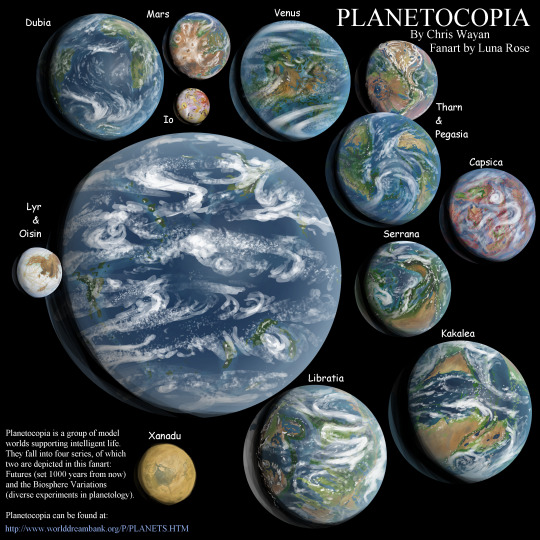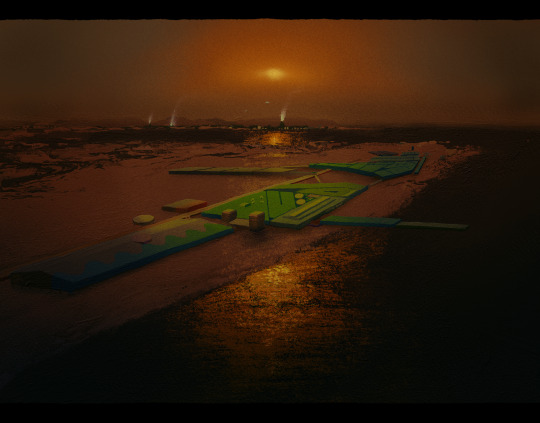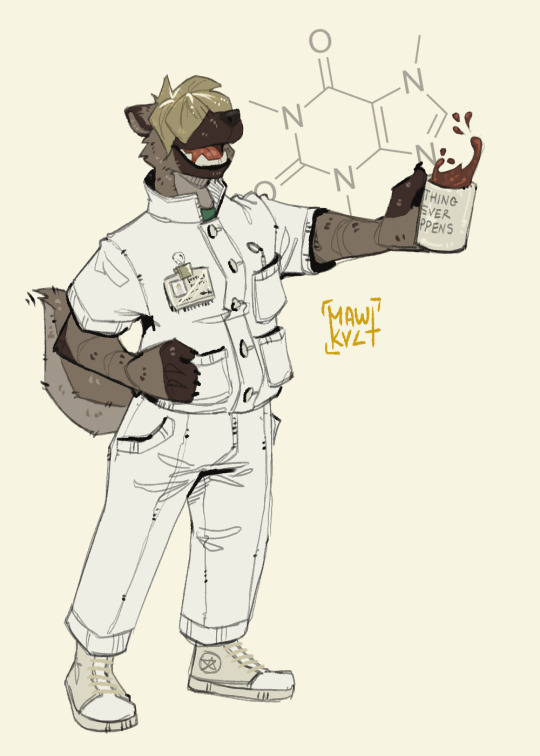Don't wanna be here? Send us removal request.
Text

It's Vel time! ^^ Soooooo I'm adjusting her DM outfit for a bit today :3
Decided to remove? or just tuck away her scarf in the wardrobe cause it ended up covering her chest text screen X'D
Art Tag | Websites
623 notes
·
View notes
Text

My interpretation of Chris Wayan's Planetocopia, a set of alien worlds that test the limits of planetary habitablity (and also, as it happens, alien furry design.)
Planetocopia can be found here.
The planetary science based design of Planetocopia has been a huge influence on my planet-scale worldbuilding style ever since I learned of it probably close to a decade ago.
These drawings were mostly done by projecting the planet maps onto an orthographic projection and then tracing the coastlines, with all other features done manually, but some of them were traced from the photos of the physical globe models, and Kakalea, Xanadu, and Serrana were done freehanded.
Cloudless version below the cut.

332 notes
·
View notes
Text

Lunine Beach, a sleepy seaside town on the shores of Kraken Mare - a sea of liquid hydrocarbons at the north pole of Titan, largest of Saturn's retinue of icy moons.
44 notes
·
View notes
Photo






I just realized I never put this online anywhere. This is a little Knuckles comic I did for a zine that some friends of mine put together for SPX last year. It’s nothing like the last Sonic comics I did. Fewer jokes, and just generally more of a cute little Knuckles moment. But I hope you like it anyway~
53K notes
·
View notes
Text

Cassini: Last dedicated observation of the Enceladus plume (August 28, 2017)
93 notes
·
View notes
Text


There are a lot of pets at Eureka, and I'm glad to see they like Toddler Ro as much as I do.



I call this piece "Solitude and Sorority in the Saunas"
Now, I'm no expert, but surely it would be a good idea to take off your glasses in a sauna? Debby must have forgotten.
I always forget that some of my colonists have cool body tattoos... I should draw them all sometime


Hazrov had a cozy afternoon winding down by watching telly next to the hydroponics basins where we grow our drugs.

Oh no!
Anyway


Clarence is one of my many (18!!) devilsheep that has recently undergone mass sterilization. There were too many of them for their pen, so now we've made sure they will not make any more baby sheep and can concentrate on making devilstrand instead.
Nothing particularly exciting happened today, sorry. But sometimes it's nice to have a relaxing day of red panda nuzzling, relaxing in a sauna, watching TV, and wandering around in confusion.
First | Next | Previous
30 notes
·
View notes
Note
in Tomorrow's Country were there any further experiments with lithium fluorine hydrogen rockets (youtu.be/KX-0Xw6kkrc), or has it just gotten more and more impractical in comparison to lox and H₂/CH₄/Kerosene? also, have any new propellant technologies emerged?



134 notes
·
View notes
Text

Strikes, slowdowns, and poor management decisions hold back Duhr's otherwise excellent rail transit network from reaching its full potential. People blame both the guilds and the railroad companies, depending on who they think is responsible for today’s particular delay.
205 notes
·
View notes
Note
high-tech polity with a strong turborocket lobby that banned all space infrastructure so their affronts to engineering and God could corner the launch market
in Tomorrow's Country were there any further experiments with lithium fluorine hydrogen rockets (youtu.be/KX-0Xw6kkrc), or has it just gotten more and more impractical in comparison to lox and H₂/CH₄/Kerosene? also, have any new propellant technologies emerged?



134 notes
·
View notes
Note
in Tomorrow's Country were there any further experiments with lithium fluorine hydrogen rockets (youtu.be/KX-0Xw6kkrc), or has it just gotten more and more impractical in comparison to lox and H₂/CH₄/Kerosene? also, have any new propellant technologies emerged?



134 notes
·
View notes







